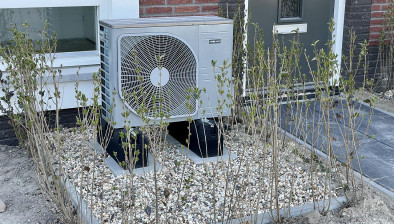New report makes case for investment to support move away from fossil fuel heating
A significant increase in public spending to help move homes and other buildings away from a reliance on fossil fuel heating is required if Scotland is to successfully end its contribution to climate change by 2045, according to a new report.

Currently around half of all Scotland’s energy usage is for heating, with the majority of that coming from fossil fuel gas.
If current rates of energy efficiency and clean heating are not improved, Scotland will either be stuck burning large amounts of damaging fossil fuels in 2045, or will risk a disruptive, rushed and costly exercise to rapidly retrofit clean heating systems in the 2030s.
The report ‘Delivering on net zero: next steps for Scotland’ from Vivid Economics and commissioned by WWF Scotland argues that the number of homes needing energy efficiency upgrades should double to 80,000 per year, while Scottish Government funding for home energy efficiency should be doubled from around £125 million to £250m per year.
On average, 70,000 homes per year will need to have a renewable heating system installed every year between now and 2050 – compared to between 1,000 to 2,000 homes per year currently, it added.
The report also calls for a new Scottish renewable heat-pump grant to be created, with hundreds of millions of pounds of Scottish Government investment per year, to expand the usage of renewable heat-pumps in Scotland.
The report also states the need for the combination of a long-term national plan to regulate out fossil fuel heating, and local strategies devised by local authorities. This long-term approach will ensure that the supply chain has the policy stability needed for it to expand, it said.
The Scottish Government should also invest in support for the skills and training needed for this heating transition, it added.
The report finds that new funding support and policy action is required across the whole economy to ensure Scotland is on a pathway to achieve the new net-zero greenhouse gas emissions target for 2045.
Analysis suggests that current policy is not sufficient even to meet the old weaker targets, so significant new action is crucial now that the new Climate Act has been passed. Additional action from the Scottish Government is also required in the transport, agriculture, land use, forestry and industry sectors.
Robin Parker, climate and energy policy manager at WWF Scotland, said: “Fossil fuel heating is a major cause of climate pollution in Scotland, and it’s the next big frontier for reducing emissions, that we need to address properly if we are to play our full part in responding to the climate emergency.
“While there is some scope for individuals to ensure that their homes are not wasting heat, most of this change needs to be led by government, working with local authorities. When it comes to replacing a boiler, unlike buying a new car, the consumer is in the hands of the installer, so government financial support and regulation are the main way we can make a difference.
“We have all the technological answers we need, there are already thousands of Scots enjoying warm, renewably heated homes, free from fossil fuels. That’s something we should all be able to enjoy, just as it is already the norm in many other northern European countries. By investing in cosy, green homes, the Scottish Government can respond to the climate emergency, protect fuel poor and vulnerable households, and create a new renewable heating industry in Scotland.”
Maarten Hage, senior economist at Vivid Economics, said: “This new report translates the new net zero 2045 target into the implications for the scale and pace of change required. For example, heat pumps will need to be installed at a far greater rate than the current installation rate of gas boilers. We are beyond the point of fitting in with existing replacement cycles of heating equipment, and delay will increase costs. Scotland is well placed to make this transition, and by learning lessons from approaches overseas, such as capital cost subsidies and involvement of local authorities, the transition is achievable”
Responding to the report, Fabrice Leveque, senior policy manager at Scottish Renewables, said: “While three-quarters of Scotland’s electricity now comes from renewable sources, just 6% of our heat is green.
“As this report shows, public funding has a role to play in growing this new industry and producing the cost reductions which come with deployment at scale, but the lack of certainty created by both the UK and Scottish Governments is pushing industry towards a cliff-edge when current support schemes end.
“Renewable heat is a huge opportunity for Scotland, with heat pumps manufactured in Glasgow and Livingston already making the most of our plentiful supplies of green electricity. With the right policies in place our industry can deliver the carbon reductions needed to tackle climate change alongside economic benefits which will be felt across Scotland.”





















